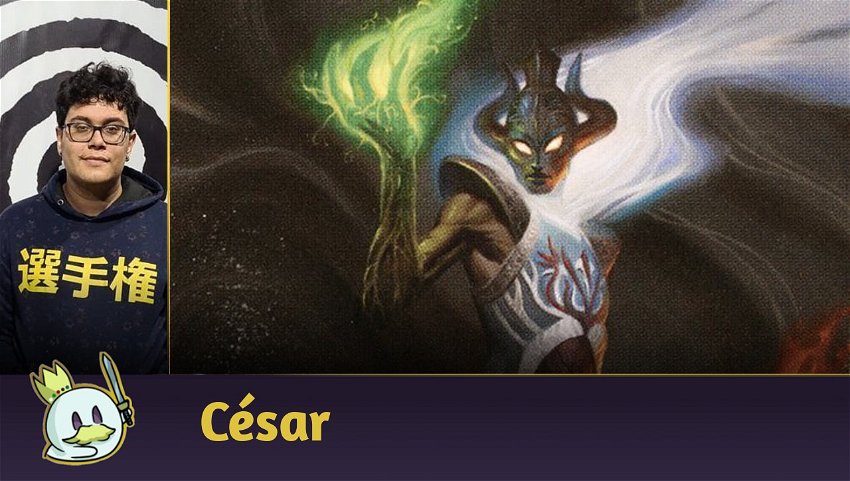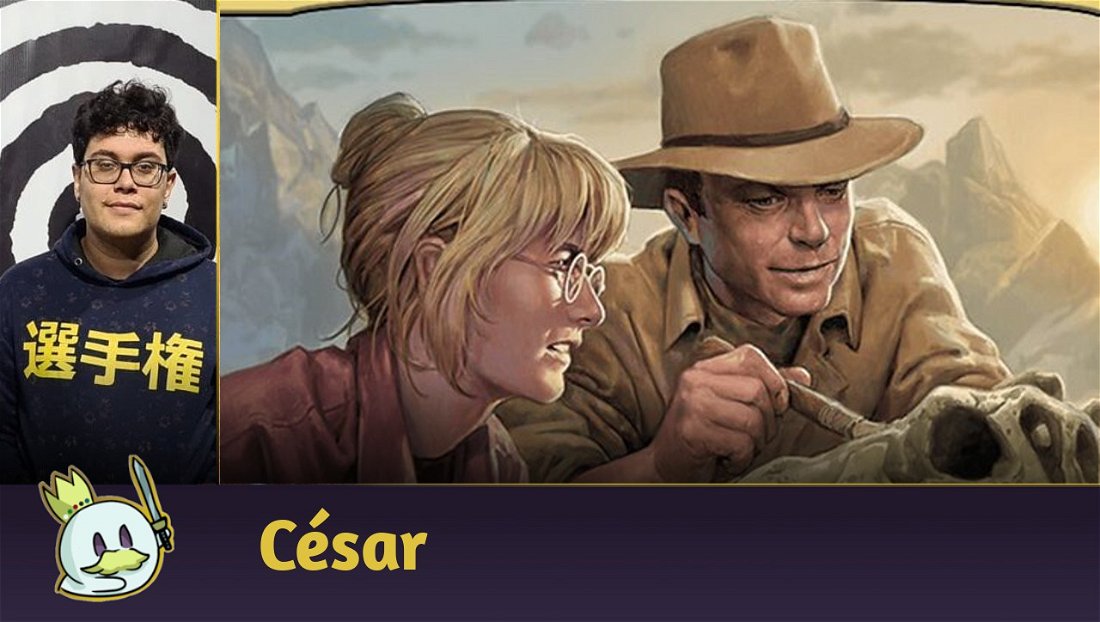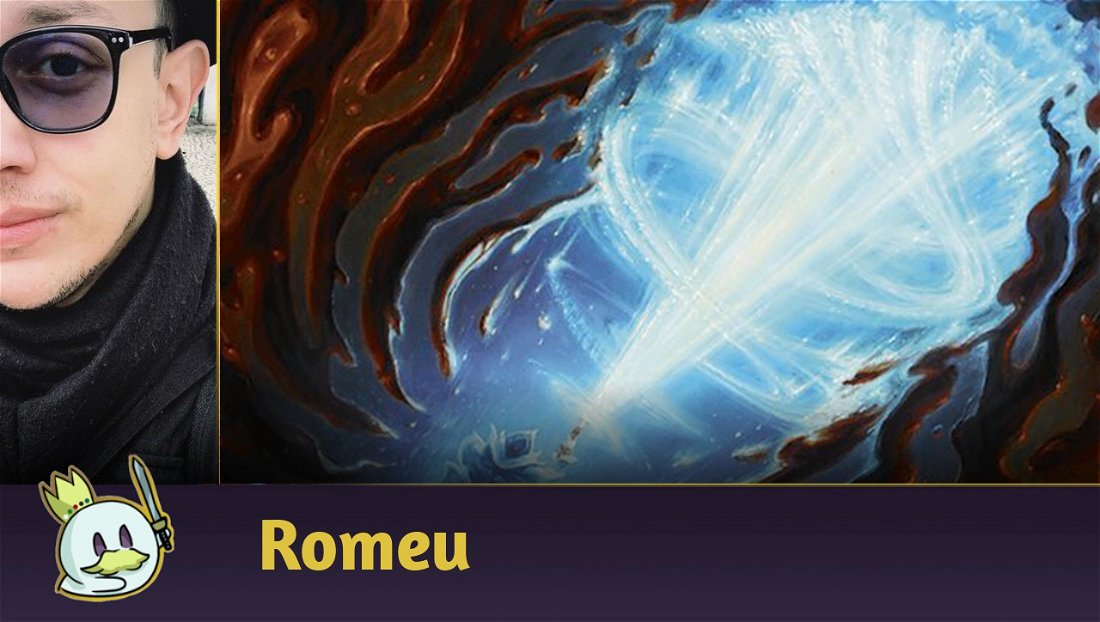Introduction
I, particularly, am a big fan of Cascade. I started with Maelstrom Wanderer in 2017. The years have passed on, I deconstructed this deck, but, as time went on, I was introduced to Averna, the Chaos Bloom.
Ever since I created an initial list more than a year ago, I have been deeply in love with this deck, and have kept it to this day. Today, it is my favorite deck, and will be the focus of today's Deck Tech. It is a very special Deck Tech, as this is my pet deck, and the one I use most IRL.
Ad
Commander and Mechanic
Averna, the Chaos Bloom is a commander that doesn't have any abilities if you read it literally, but it shines through other cards. Averna has a gigantic ramp potential, particularly with low-cost Cascade spells, allowing you to have more lands on board according to each spell you play.

The Temur 


Averna, the Chaos Bloom List and Deck Strategy
As said before, this is the list I use the most IRL, which, with time, I refined until I reached this version, which is the one I enjoy playing the most currently. Obviously, I could have Maelstrom Wanderer at the command tower and just add absurd cards to this deck, but playing with Averna is as fun as if I did, and I ended up enjoying this card more at the command zone.
At the end of this article, we'll also show you a budget version, with good spells, even though it is a very different list from the one we'll show you initially. Without further ado, let's go straight into it.
Mana Base
Before going into accelerators, as we usually do, I need to highlight a detail regarding one of this deck's sub-themes: Gates. We don't have a lot of depth with cards like Open the Gates, Circuitous Route and the like; instead, we use the gates only as lands.
The idea is to use Gond Gate to go around Averna's effect that states lands go into play tapped, and take even more advantage of the lands that enter the battlefield. We also use Baldur's Gate, the Gate equivalent of Nykthos, Shrine to Nyx to help us and provide mana.

Another card that stands out in this deck is Field of the Dead. This deck can put many lands at once in play, so having a 2/2 Zombie for each land, be it to attack or block with them, is great. Precisely because we use Field of the Dead that we use our basic snow lands; to get all 7 different land names faster. We also use them to search them with Into the North. Speaking of ramp, let's see the accelerators we use.
Accelerators

We don't use Sol Ring or any signet, considering it is frustrating to activate Cascade and have one of these artifacts show up instead of another spell.
So, to compensate for this, we use several ramp cards: this list's "Sol Ring" is Search for Tomorrow, if we compare it with a turn 1 play.
As for the curve 2 spells, we use Farseek, Nature's Lore, Rampant Growth, Three Visits, Into the North to look for basic snow lands and Rimewood Falls or Volatile Fjord.
Ad
On curve 3, we have Cultivate, Kodama's Reach and Entish Restoration - which just by being used with our commander already fulfills its requirement of having 4 or more power to search 3 lands.

As creatures that create mana somehow, we use Tireless Provisioner, Lotus Cobra and Nissa, Resurgent Animist. It is thanks to these ramp tools that our commander can create incredible value.
Nissa is quite similar to Lotus Cobra, but it can search Bloodbraid Elf, Tireless Provisioner and particularly Maelstrom Wanderer and add them to your hand, considering these are the only Elves and Elemental cards in this deck, respectively.

The other two cards that stand out are Spelunking, which is like a Gond Gate, but applies to every land and not only gates, and Stone-Seeder Hierophant. Stone-Seeder Hierophant has an incredible potential in this deck, and can create a lot of value with its ability, generating a lot of mana.

Cascade Triggers

These are all the cards with the Cascade ability in this deck. Even though there are more card options, after several games I reached the conclusion that these are the most viable. It's worth pointing out that, if you have multiple Cascade triggers, such as Apex Devastator or Maelstrom Wanderer, each Cascade is a different trigger for Averna, which means, any time this happens, if a land appears among your exiled lands, it comes into play tapped.
Now that this is clear, let's start with this deck's two big threats: Maelstrom Wanderer and Apex Devastator. Apex Devastator is almost a win condition, depending on what this little box of surprises we call a deck has to offer at the moment this card is played. Maelstrom Wanderer doesn't have the same impact as our Chimera Hydra, but it still stands out. It is one of this deck's Haste sources, and, with the right spells, can create a very aggressive scene as soon as it enters the board.

Going into our next highlights, we have Imoti, Celebrant of Bounty and Bigger on the Inside. Imoti interacts with around 34% of this deck, and, among the 6+ cost spells, we have a few that already have Cascade, which then generate us a second trigger, such as Sakashima's Protege, Aurora Phoenix, Sweet-Gum Recluse and Etherium-Horn Sorcerer, for instance. This is a great piece to keep on the board, and most times isn't even used to attack or block, only going into combat when it's absolutely necessary.

Ad
Bigger on the Inside is a card that has a very peculiar synergy with Stone-Seeder Hierophant and Averna. Averna specifies that this land goes on the board before the spell is resolved, and this allows us to use Bigger on the Inside with Stone-Seeder Hierophant, creating a Cascade trigger for the next spell, and hitting a land again. This process can repeat itself, and, like so, you'll have another chain of Cascades whenever these conditions are met.

We also have a few removal Cascades: Volcanic Torrent as mass removal for your opponent's creatures and planeswalkers; Natural Reclamation for artifacts or enchantments and Noise Marine to remove problematic creatures or even an opponent, depending on how many spells were played on that turn.
The card that stands out among all removals is definitely Call Forth the Tempest, which has two Cascades and can remove absolutely anything in its path to set up a very aggressive turn, considering your opponent won't have any blockers.

Finally, these are our last Cascade cards: Bloodbraid Elf, Heralds of Tzeentch, Violent Outburst and Shardless Agent. They might not be as strong and impactful as the ones listed before, but it is important to have low-cost cards to possibly Cascade ramp cards and also trigger Averna. And the creatures listed here have good bodies and can be blockers if necessary.

Paradox

In Doctor Who, playing spells from anywhere that isn't your hand ended up being called Paradox, which explains this section's title. We have spells that, despite not having Cascade, in some way cheat out costs or allow us to play spells without paying their costs.
Starting with the interactions with tokens from exile or Paradox triggers, we use Faldorn, Dread Wolf Herald, to create tokens both from the exile (which is where the Cascade spells come from) or the lands Averna places on the board; and The Lost and the Damned to also create tokens from this or from ramp cards, considering this card states that the land that goes in won't trigger only if it was played directly from your hand.

We use Keeper of Secrets and Passionate Archaeologist to deal direct damage to our opponents, and they are possible win conditions too.
Finally, we have Nalfeshnee to copy spells coming from exile and Wild-Magic Sorcerer to add Cascade to any spells that comes from exile. Nalfeshnee definitely stands out, as it can copy several spells that can simply bring us to victory just because they were copied; these spells, I'll list soon.
Ad

Now, let's see the spells that allow us to cast cards outside our hand: Unexpected Results, which is also a type of ramp if it hits a land, Creative Technique, which in almost 100% of cases will be cast with Demonstrate, and Mind's Desire, which can be a win condition depending on the size of your Storm Counter and the current game state - for instance, with Keeper of Secrets or Passionate Archaeologist in play, each card you card from Mind's Desire will deal damage.

To finish the Paradox section, I couldn't forge the two Dinosaur versions which interact with this mechanic: Etali, Primal Conqueror and Etali, Primal Storm. We have a possible backup plan if we use the Etali, Primal Sickness side to finish an opponent.
Sunbird's Invocation can bring us excellent value, considering most spells have a high cost, so it can work almost 100% of the time.

Chimil, the Inner Sun is a card that was recently added from Lost Caverns of Ixalan, and was totally worth a spot: it makes spells Uncounterable and also Discovers 5 at the end of the turn. Be it to cast them at once or just add them to your hand, this card gives us a great advantage in the game.
Lastly, we have Delayed Blast Fireball, which, if hit by Cascade, deals its 5 damage, as it came from exile. The intention is not using it through Foretell, but, if you need to, there's no reason why not.

Haste Sources and Other Creatures

This deck usually wins through combat damage, so it is essential to have several Haste sources to start attacking early on. For this reason, we use Temur Ascendancy, which will provide us with access to card draw, Rising of the Day, which will buff legendary creatures and Rhythm of the Wild, which will provide us with Riot and make creatures Uncounterable.

We have a few creatures with the Landfall interaction - after all, because our commander can place lands on the board through its ability, it would be weird to not have interactions with Landfall. For this reason, we use Aesi, Tyrant of Gyre Strait and Tatyova, Benthic Druid to draw cards, and Scute Swarm to create an army of Insects and use them to trample opponents.

Finally, we have big creatures to pressure the board that also serve as a defensive resource: Koma, Cosmos Serpent to create a solid board and also tap your opponent's important cards, and Hullbreaker Horror. Considering we can play several spells in a single turn, this Kraken Horror can remove blockers and even cards that tax combat in some way from its path; that means problematic permanents in general.
Ad

Utilities and Other Interactions

This is the rest of the cards in this deck; we got a bit of everything. As we have numerous actions to do in our own turn, one of this deck's flaws is that it is not that interactive when it is our opponent's turn. For this reason, we have a few answers, and they are: Chaos Warp and Beast Within. As a last global removal, we have the most practical one: Blasphemous Act.

We also have a few utility cards to help us throughout the game.
Seasons Past will bring us resources back from the graveyard, and can be played again to go back to the bottom of our deck.
Rishkar's Expertise allows us a free cast and can draw numerous cards, according to the size of the creatures in play.

To cheat out costs, we have One with the Multiverse, which does this job well, besides being able to cast spells directly from the top of our deck and trigger Paradox. We also have a possible win condition: Aetherflux Reservoir. This deck can play many, and I mean many, spells at once per turn when it gets going, so this famous reservoir can end one if not two opponents in one go.

With enough cards in your hand and many lands in play, Rude Awakening is practically an extra turn. Speaking of extra turns, we use Nexus of Fate and Walk the Aeons, two "extra turn" cards that can be used more than once. The number of islands in this deck was based precisely on Walk the Aeons's buyback. And, to finish this list, we have Cascade's Bribery: Inevitable Betrayal. This card was designed to be hit by Cascade and be cast without paying its cost, a window that is used even in Modern decks with other cards that don't have a cost.

Averna, the Chaos Bloom Budget List
There are a few significant differences between the creatures and spells we selected for both of these lists, but the idea of adding several Cascade spells for this deck to still make sense is still here.
Final Words
This is definitely my favorite deck to play today, and writing a Deck Tech about it was really rewarding. This is a list that I always tweak here and there from time to time, but the definitive list is this one. I hope you liked it, and that you can use it as a base to also create one of your very own Averna, the Chaos Bloom deck.
Did you enjoy this deck? Do you prefer Maelstrom Wanderer? Would you not go down the Cascade route? Share your thoughts below!










— Comments0
Be the first to comment